Maryland Dental Bridge
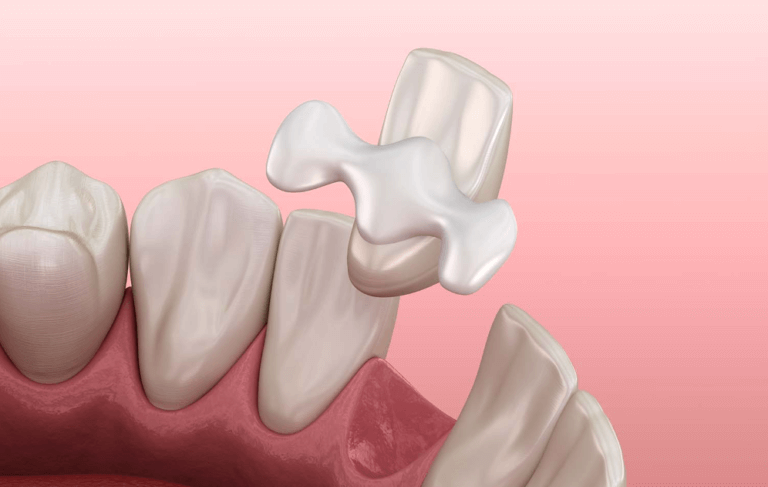
What Is A Maryland Dental Bridge?
A Maryland Dental Bridge, also known as a resin-bonded fixed partial denture, is a specialized dental bridge prosthetic designed to fill the gap left by missing teeth. Like a traditional bridge, it includes a floating tooth to replace the missing one, but it adheres to the adjacent teeth in a unique way. Instead of fully covering the teeth next to the missing space with crowns, this device bonds to the existing teeth using a metal framework. It looks like a flying bird, with the false tooth in the center and the two wings reaching out on either side to bond to the tongue side of the supporting teeth. Because the Maryland bridge does not fully cover the adjacent teeth, it offers a more conservative approach compared with other tooth replacement options.
Before deciding on whether A Maryland Dental Bridge are right for you, there are some things you should know:
- Who Needs A Maryland Dental Bridge?
- What Are The Advantages Of A Maryland Dental Bridge?
- What Are The Alternative Treatments If I Do Not Choose A Maryland Dental Bridge?
- How Much Does A Maryland Dental Bridge Cost?
- What Are The Steps In The Maryland Dental Bridge Procedure?
- Can I Have A Maryland Dental Bridge If I Am Pregnant?
- How Long Does A Maryland Dental Bridge Last?
- What Are Common Problems with A Maryland Dental Bridge?
If you have any further questions about A Maryland Dental Bridge or other dental services offered at Atlas Dental, please contact us.

Free phone consultation
Are you missing teeth and have questions about Dental Bridges? Schedule a free phone consultation with our GTA dentist.

5 star google reviews
Our patients love us! See why people are choosing Atlas Dental for Dental Bridges.

Book Emergency Bridge visit online
Have a problem with your Dental Bridge? Book An Emergency Dental Appointment Online.
Who Needs A Maryland Dental Bridge?
A Maryland Dental Bridge can be a suitable solution for individuals who are facing the challenges posed by a missing tooth and are seeking an effective way to restore both the functionality and appearance of their smile. If you find yourself in any of the following situations, a Maryland Dental Bridge might be the right option for you:
- Single Tooth Loss At The Front Of The Mouth: If you’ve lost a central incisor, lateral incisor, or canine tooth due to decay, trauma, or other reasons, a Maryland dental bridge can help fill the gap while maintaining the appearance and functionality of your smile.
- Unsuitable Candidates for Dental Implants: Dental implants are a popular choice for tooth replacement, but not everyone is an ideal candidate due to factors like bone density or health conditions. In such cases, a Maryland dental bridge can provide a durable alternative for restoring your smile.
- Adjacent Tooth Loss: When two or more teeth are missing in a row, a Maryland bridge can span the space and restore your ability to bite, chew, and speak naturally.
- Avoiding Dental Implants: While dental implants are a popular choice for tooth replacement, some individuals prefer a less invasive option. Maryland bridges can be a suitable alternative, as they don’t require the placement of implants in the jawbone.
- Preserving Tooth Structure: Unlike traditional bridges, which involve placing crowns on adjacent teeth, Maryland bridges are designed to preserve the natural structure of neighboring teeth. This makes them an attractive option for those who want to maintain the health of their existing teeth.
- Enhancing Aesthetics: Maryland dental bridges are crafted with a keen focus on aesthetics. If you’re concerned about how missing teeth affect your smile’s appearance, a Maryland bridge can help restore your self-confidence and give you a reason to smile again.
- Minimally Invasive Solution: If you’re seeking a minimally invasive tooth replacement option, a Maryland bridge fits the bill. This type of bridge attaches to the back of neighboring teeth using a conservative bonding process, reducing the need for extensive dental work.
- Functional Benefits: Beyond appearance, a Maryland bridge can significantly improve your ability to eat, chew, and speak comfortably. By closing the gap left by missing teeth, you can avoid issues like uneven bite pressure, speech difficulties, and shifting of remaining teeth.
Whether you’re dealing with the aftermath of a sudden tooth loss or have been living with a gap in your smile for some time, a Maryland dental bridge offers a versatile solution tailored to your needs. If you have further questions about Maryland Dental Bridges, please contact us.
What Are The Advantages Of A Maryland Dental Bridge?
A Maryland dental bridge has several advantages that contribute to its widespread use:
- Natural Appearance: One of the standout features of a Maryland dental bridge is its ability to blend seamlessly with your natural teeth. The bridge’s framework is often made from a tooth-colored material, ensuring that it harmonizes with your smile, making it difficult for others to discern the presence of a prosthetic.
- Preserves Tooth Structure: Unlike traditional bridges that require the alteration of adjacent teeth to accommodate crowns, Maryland bridges are designed to minimize this type of alteration. The neighboring teeth are typically bonded to the bridge using a conservative adhesive, allowing them to retain more of their natural structure.
- Minimally Invasive: The placement of a Maryland dental bridge is relatively non-invasive compared to other tooth replacement options. This means less discomfort during the procedure and a quicker recovery period.
- Quick Procedure: The process of getting a Maryland bridge usually involves fewer steps and appointments compared to other treatments like dental implants. This means you can enjoy your restored smile sooner.
- No Surgery Required: Unlike dental implants, which involve a surgical procedure to anchor the prosthetic tooth, Maryland bridges do not require any surgery. This can be particularly appealing to individuals who wish to avoid invasive procedures.
- Enhanced Chewing and Speaking: Missing teeth can impact your ability to eat and speak comfortably. A Maryland bridge fills the gap, allowing you to chew your favorite foods with ease and speak clearly without impediments.
- Supports Adjacent Teeth: The framework of a Maryland bridge helps provide support to neighboring teeth, preventing them from shifting into the gap left by the missing tooth. This contributes to the overall stability of your dental arch.
- Boosts Self-Confidence: Restoring your smile can have a profound impact on your self-esteem. With a Maryland dental bridge, you can regain the confidence to smile, laugh, and interact without worrying about the appearance of missing teeth.
- Cost-Effective: Compared to some other tooth replacement options, Maryland bridges tend to be more cost-effective, making them accessible to a broader range of individuals seeking to restore their smiles.
As with any dental procedure, it’s essential to consult with a skilled and experienced dentist to determine whether a Maryland bridge is the right option for your specific situation. Your dentist will evaluate your oral health, discuss your goals, and create a personalized treatment plan that aligns with your needs and preferences. If you have further questions about Maryland Dental Bridges, please contact us.
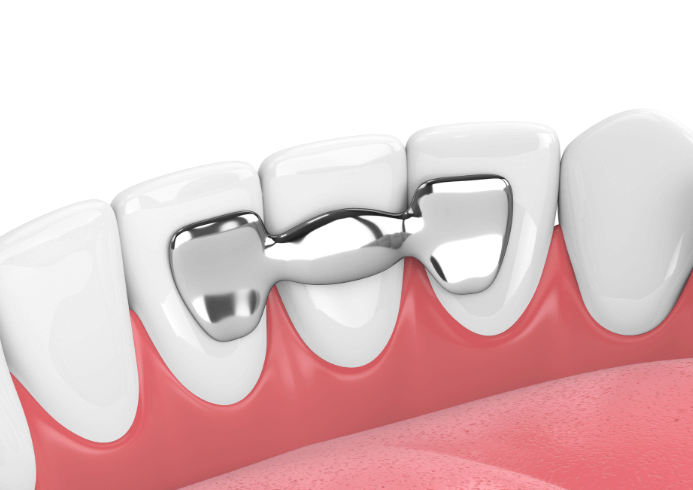
What Are The Alternative Treatments If I Do Not Choose A Maryland Dental Bridge?
While a Maryland dental bridge offers a range of advantages for replacing missing teeth, it’s important to consider alternative treatments that might better suit your needs or preferences. Here are some alternative options to explore:
- Cantilever Bridge: This type of bridge is used when there is only one adjacent tooth next to the gap. The pontic is supported by a crown on the adjacent tooth, creating a cantilever structure. Cantilever bridges are typically used in low-stress areas of the mouth.
- Zirconia Bridge: Zirconia is another popular dental material known for its strength and natural appearance. A zirconia bridge can provide durability and aesthetic appeal, although it may involve a more substantial removal of tooth structure during preparation.
- Porcelain Fused to Metal Bridge: This bridge combines the strength of metal with the aesthetics of porcelain. While it offers good durability and a natural appearance, the metal substructure might result in a slightly visible dark line at the gumline.
- Gold Bridge: Gold bridges are known for their strength and biocompatibility. While the appearance is distinct from natural teeth, some patients appreciate the durability and unique aesthetics of gold restorations.
- Lithium Disilicate Bridge: These bridges are made from a high-strength ceramic material and are known for their aesthetics and durability. They are a popular choice for visible areas of the mouth.
- Dental Implants: Dental implants are a popular choice for tooth replacement, offering a permanent solution that mimics the feel and function of natural teeth. However, they involve a surgical procedure to implant a metal post into the jawbone, followed by attaching a prosthetic tooth on top. Implants are a great option for those seeking a long-term solution, though they can be more invasive and require more healing time.
- Removable Partial Dentures: If you’re seeking a removable option, partial dentures might be suitable. These dentures are custom-made to fit your mouth and can replace one or more missing teeth. They are held in place by clasps that attach to existing teeth.
- Orthodontic Treatment: If you have minor tooth gaps, orthodontic treatments like braces or clear aligners could be an option. By shifting your existing teeth into the gaps, you can achieve a more aligned smile without the need for prosthetics.
- No Treatment: While not a recommended solution, choosing to do nothing about a missing tooth can lead to various oral health issues. Adjacent teeth might shift, bite alignment can be compromised, and bone loss may occur over time.
Each alternative treatment comes with its own set of benefits and considerations. Factors such as cost, durability, aesthetics, and your overall oral health will influence which option is the best fit for you. Consulting with your dentist is important to receive personalized recommendations based on your unique situation. If you have further questions about Maryland Dental Bridges, please contact us.
Cost of Dental Bridge
Dental Bridges rely on retainers (natural teeth) to support pontics (false floating teeth where a tooth is missing). Therefore, the price of a dental bridge will depend on the number of pontics and retainers. A 3-unit bridge, for example, would cost $1207+538+1207 plus dental lab fee (approximately $800), which is equal to $3752. The codes relevant to dental bridges in the Ontario Dental Association’s Suggested Fee Guide appear as follows:
Pontics, Porcelain/Ceramic/Polymer Glass
- 62501 – Pontics, Porcelain/Ceramic/Polymer Glass Fused to Metal: $538 + Dental Lab Fee
Retainers, Porcelain/Ceramic/Polymer Glass
- 67201 – Retainer, Porcelain/Ceramic/Polymer Glass: $1207 + Dental Lab Fee
Other factors that could affect the cost of dental bridges include local dental association fee guides, dental bridge materials, qualifications of the dentist or prosthodontist, dental laboratory fees, and whether you have dental insurance coverage.
The Ontario Dental Association’s Suggested Fee Guide is a proposed fee structure that dentists in Ontario may or may not follow. Please consult with your dentist about fees before going ahead with treatment.
Dental bridges are sometimes considered a supplementary service by dental insurance plans and may or may not be covered by your dental insurance. Be sure to find out from your dental insurance plan provider how much you are eligible for before going ahead with dental treatment. Your dentist can help you submit an predetermination to your dental insurance.
For patients without dental insurance, Atlas Dental is pleased to offer dental financing through Dentalcard. Affordable payment plans start at 7.95% for terms of 6 months to 6 years. To learn more about Dentalcard dental treatment financing, follow this link.
What Are The Steps In The Maryland Dental Bridge Procedure?
The process of getting a Maryland dental bridge is a well-coordinated sequence of steps designed to ensure a seamless and successful outcome. Here’s an overview of the typical procedure:
- Initial Consultation: Your journey begins with a consultation with a dentist experienced in tooth replacement procedures. During this visit, your dentist will examine your oral health, discuss your goals and concerns, and determine if a Maryland dental bridge is the right option for you.
- Treatment Planning: If a Maryland bridge is deemed suitable, your dentist will develop a personalized treatment plan. This involves considering factors such as the number of missing teeth, the condition of your adjacent teeth, and your overall oral health. Please review these dental bridge pre-visit instructions before your appointment.
- Tooth Preparation: Unlike traditional bridges that require reshaping of adjacent teeth, Maryland bridges involve minimal alteration. Your dentist will gently etch the back surfaces of the neighboring teeth to create a bonding surface for the bridge.
- Impressions And Shade Selection: Accurate impressions of your prepared teeth are taken using dental putty or digital scanning technology. Your dentist will also help you select a shade that matches the color of your natural teeth for a seamless blend.
- Temporary Bridge: While your permanent Maryland bridge is being fabricated, your dentist might place a temporary bridge to protect your teeth and maintain the aesthetics of your smile.
- Fitting and Bonding: Once your custom bridge is ready, you’ll return to the dentist’s office for the fitting. Your dentist will carefully place the bridge and assess its fit and appearance. If everything meets your satisfaction, the bridge will be bonded to the back of the neighboring teeth using a strong adhesive.
- Final Adjustments: Your dentist will ensure that the bridge is comfortable, doesn’t interfere with your bite, and provides optimal function. Any necessary adjustments will be made to achieve the best possible result.
- Home Care Instructions: Your dentist will provide you with detailed dental bridge post-insert instructions on how to care for your Maryland bridge. Regular brushing, flossing, and routine dental check-ups are essential to maintain the health and longevity of your bridge.
By following these steps and collaborating closely with your dentist, you can expect to achieve a restored smile that enhances both your appearance and your overall quality of life. If you have further questions about Maryland Dental Bridges, please contact us.
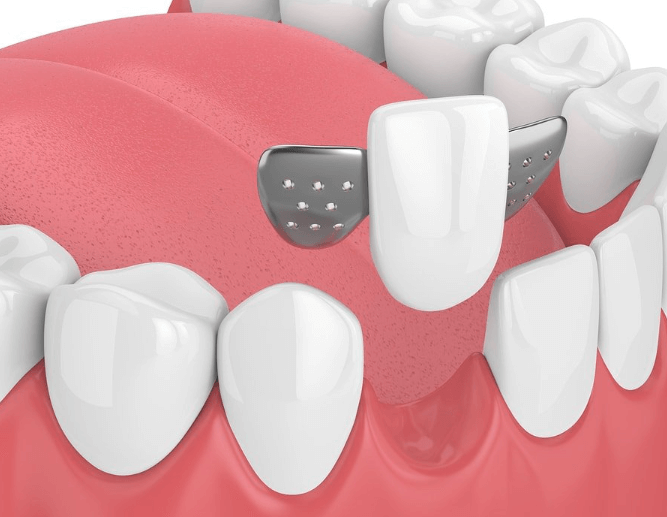
Can I Have A Maryland Dental Bridge If I Am Pregnant?
Pregnancy is a unique and transformative period in a woman’s life that requires special considerations when it comes to medical and dental procedures. Dental health plays a crucial role in overall well-being, and it’s natural to have concerns about undergoing dental treatments, such as getting a Maryland dental bridge, during pregnancy. Here’s what you need to know:
- Consultation with Your Obstetrician: Before undergoing any dental procedure, including getting a Maryland dental bridge, it’s important to consult with your obstetrician. They can provide personalized guidance based on your health status, the stage of your pregnancy, and any potential risks associated with dental treatments.
- Timing: If the treatment is deemed necessary and safe by your obstetrician and dentist, it’s generally recommended to schedule elective dental procedures, including getting a Maryland bridge, during the second trimester. This is considered the safest period for most dental treatments and helps minimize potential risks to the developing fetus.
- Local Anesthesia: Local anesthesia with lidocaine is commonly used for dental procedures. This type of anesthesia is generally considered safe during pregnancy when administered in appropriate doses. However, it’s important to discuss the specific type of anesthesia and its safety with your dentist and obstetrician.
- X-rays: X-rays are usually avoided during pregnancy, especially during the first trimester when the fetus is most vulnerable. If dental X-rays are necessary, your dentist will take extra precautions to minimize radiation exposure to both you and your baby.
- Medications: Pain relief medications like acetaminophen are generally considered safe during pregnancy. Your dentist can recommend suitable pain management options if needed after the procedure.
- Avoid Non-Essential Medications: During pregnancy, it’s advisable to avoid unnecessary medications or interventions, including dental treatments, unless they are essential for your oral health.
- Open Communication: Always communicate openly with both your obstetrician and dentist about your pregnancy and any concerns you have about dental procedures. They can work together to make informed decisions that prioritize both your oral health and the well-being of your baby.
Ultimately, the decision to have a Maryland dental bridge during pregnancy will be made based on careful consideration of your health, the specific circumstances, and the guidance of your healthcare provider and dentist. Open communication between all parties involved is crucial to ensure the best possible outcome for both your dental health and the health of your baby. If you have further questions about Maryland Dental Bridges, please contact us.
How Long Does A Maryland Dental Bridge Last?
On average, a well-maintained Maryland dental bridge can last anywhere from 10 to 15 years, and even longer in some cases. The longevity can vary based on individual factors and the care you provide for your oral health.
- Oral Hygiene: Proper oral hygiene practices, including regular brushing, flossing, and professional dental cleanings, are essential for the longevity of your Maryland bridge. Good oral hygiene helps prevent decay and gum disease that could compromise the bridge’s stability.
- Diet and Lifestyle: Avoiding hard or sticky foods and refraining from habits like nail-biting or using your teeth as tools can help prevent damage to the bridge.
- Materials: The materials used in the bridge’s construction can influence its durability. High-quality materials and meticulous craftsmanship can contribute to a longer-lasting bridge.
- Bite and Grinding: If you have a habit of grinding your teeth (bruxism) or if your bite is misaligned, it can put extra stress on the bridge and its supporting teeth, potentially shortening its lifespan.
- Adjacent Tooth Health: The health of the neighboring teeth that support the bridge is crucial. Any issues with these teeth can affect the bridge’s stability and durability.
- Regular Check-ups: Regular dental check-ups allow your dentist to monitor the condition of your Maryland bridge and address any issues before they worsen.
By following these guidelines and maintaining a proactive approach to your oral health, you can maximize the lifespan of your Maryland dental bridge and continue enjoying the benefits of a complete and confident smile for years to come. If you have further questions about Maryland Dental Bridges, please contact us.
What Are Common Problems with A Maryland Dental Bridge?
While a Maryland dental bridge offers an effective solution for replacing missing teeth, like any dental restoration, it can occasionally encounter issues that require attention. Being aware of potential problems can help you take proactive steps to prevent or address them. Here are some common problems associated with Maryland dental bridges:
- Debonding: One of the primary concerns with Maryland bridges is the potential for debonding, where the bridge detaches from the supporting teeth. This can occur due to factors like weak bonding material, poor fit, or excessive biting force.
- Fracture or Chipping: The bridge itself or its framework can experience fractures or chipping, especially if you bite down on hard or sticky foods. This can compromise the bridge’s aesthetics and functionality.
- Gum Disease: Inadequate oral hygiene can also lead to gum disease around the bridge area. Gum inflammation and infection can affect the bridge’s stability and long term survival.
- Tooth Sensitivity: Sensitivity in the teeth supporting the bridge can occur, particularly if the tooth preparation process caused nerve irritation or if the bridge does not fit properly.
- Underlying Tooth Decay: While the ceramic covering of the bridge is resistant to decay, the natural teeth that support the bridge can still be susceptible to cavities. If these teeth develop decay, it can compromise the bridge’s stability. Maintaining good oral hygiene and regular dental check-ups is crucial to prevent decay around the bridge.
- Discoloration: Over time, the materials used in the bridge can become discolored or stained, affecting the bridge’s aesthetics. Regular cleaning and maintenance can help mitigate this issue.
- Bruxism Impact: Individuals who grind or clench their teeth (bruxism) can put extra stress on the dental bridge, potentially leading to damage or failure over time. A night guard can help protect the bridge if you have this habit.
- Wear and Tear: Over the years, normal wear and tear can affect the bridge’s integrity, causing it to become less secure or altering its appearance.
By staying vigilant about your oral health and addressing any issues promptly, you can help ensure that your Maryland dental bridge remains a reliable and effective solution for maintaining your smile’s beauty and functionality. If you have further questions about Maryland Dental Bridges, please contact us.
We also think you’ll like…
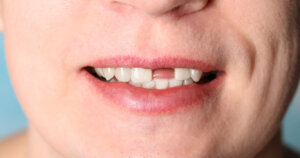
Missing Tooth
Missing Tooth What Is A Missing Tooth? A Missing Tooth refers to a condition where a tooth is no longer present in the mouth, either
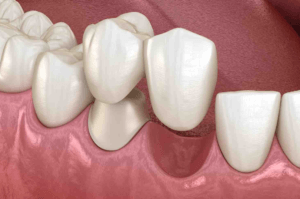
Cantilever Dental Bridge
Cantilever Dental Bridge What Is A Cantilever Dental Bridge? A Cantilever Dental Bridge is a specialized dental bridge restoration designed to address the challenges posed
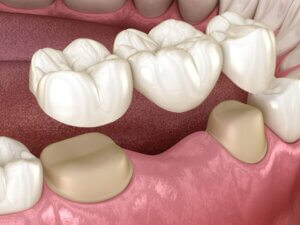
Fallen Out Dental Bridge
Fallen Out Dental Bridge What Is A Fallen Out Dental Bridge? Dental bridges, also known as fixed partial dentures, literally bridge the gap created by
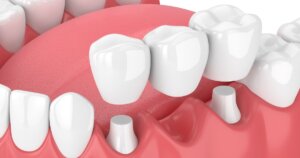
Dental Bridge Recementation
Dental Bridge Recementation What Is Dental Bridge Recementation? For individuals with missing teeth, Dental Bridges provide a functional and aesthetic solution, restoring the ability to
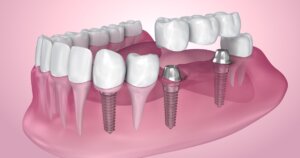
Dental Implants
Dental Implants What are Dental Implants? Dental Implants are revolutionary replacements for missing teeth that not only look and feel like natural teeth but also
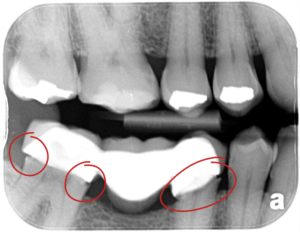
Dental Bridge Open Margin
Dental Bridge Open Margin What Is A Dental Bridge Open Margin? A Dental Bridge is a prosthetic dental appliance that is used to replace one

